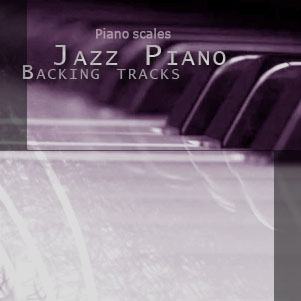Jazz scales and improvisation
There is no single group of scales that can be called jazz scales – a jazz pianist uses lots of different scales. But there are typical scales used in jazz as this overview shows. F, Bb, Eb and Ab are all common keys in jazz since they work well for brass instruments.
This guide will include Bebop Scales, Modal Scales and Jazz Minor scales.
Useful scales:
Bebop Scales – great for soloing or improvising in jazz.
Super Locrian Scales – common for modern jazz.
Nine Tone Scales – sometimes used for jazz improvising.
The Modal Scales
The Modal Scales (often referred to as just modes) were once discovered in Ancient Greece. In modern days the Modal Scales are frequently used in jazz improvisation. Dorian is often played over minor chords, Lydian is often played over major chords and Mixolydian is often played over dominant chords.
Here are the modal scales in the standard order:
In theory, these scales are rather modes, but we will use either “scales” or “modes” as terms. Modal scales may seem kind of complicated in the beginning, but they are really just variations of Major scales starting on another degree (the Major Scale is the parent scale). Therefore, if you know the major scales you will have an easier job to memorize each mode.
If we take the C Major Scale and play it in the Dorian Mode, what happens is that the notes remain the same, but the starting point is altered. C - D - E - F - G - A - B change to D - E - F - G - A - B - C and become Dorian.
Here is a complete overview of the modus of C Major:
Ionian: The tonic is still C.
Dorian: The tonic changes to D.
Phrygian: The tonic changes to E.
Lydian: The tonic changes to F.
Mixolydian: The tonic changes to G.
Aeolian: The tonic changes to A (this is identical with the A Minor Scale).
Locrian: The tonic changes to B.
What is all this good for you may ask. Why not just stick to the regular Major scales? It is true that the notes are the same in modes as in Major scales, but not the note order and that makes a big difference. It is the changed order that gives them a unique sound quality that is caused by a different root note.
We can see the differences by comparing the interval formula of the Major Scale:
- 1, 2, 3, 4, 5, 6, 7
with the intervals in some of the modes …
- (Dorian) 1, 2, b3, 4, 5, 6, b7 – (Phrygian) 1, b2, b3, 4, 5, b6, b7 – (Locrian) 1, b2, b3, 4, b5, b6, b7
So how can we use the modes? As already said, the modes can become useful when you are playing a scale over a chord in an improvisation situation. Some modes (Ionian, Lydian and Mixolydian) will sound good with Major or Dominant chords and some (Dorian, Phrygian and Aeolian) will sound good with Minor chords. The exception is Locrian that is based on diminished intervals.
Scale options over specific chords
In jazz, it is common to play scales, or arpeggios, over chords rather when the same scale over the whole tune. Here's are some guidelines. Not rules, but suggestions.
| Chord | Scale option 1 | Scale option 2 | Scale option 3 |
|---|---|---|---|
| C6, Cmaj7, Cmaj9 | C Major | C Lydian | C Major Bebop |
| Cm7 | C Minor | C Phrygian | C Minor Pentatonic |
| Cm6 | C Dorian | C Minor | C Minor Melodic |
| Cm9 | C Minor | C Dorian | C Minor Pentatonic |
| C7, C9, C11, C13 | C Mixolydian | C Bebop Dominant | C Minor Pentatonic |
| C7#5 or C7b5 | C Whole Tone | ||
| C7#9 or C7b9 | C Diminshed | C Super Locrian | |
| Cdim7 | C Diminshed | ||
| Cm7b5 | C Locrian | ||
| Cm(maj7) | C Minor Melodic |
The table says that over chords such as C6 and Cmaj7, three suitable scale options for soloing or creating melodies are the C Major scale, the C Lydian mode and the C Major Bebop scale. Obviously, if the chord instead is, for example, D major 7th, the similar corresponding D scales is suitable. In addition, some notes in a scale should often be considered less fitting. For instance, the 4th scale tone when using the Major scale over most chords.
See also Soloing lessons for Mixolydian in blues jazz.
Progressions and modulation
The primarily progression to learn is the 2-5-1, or ii - V - I, which is based on the Dorian. The 2-5-1 can be translated to Dm - G - C, but since triads is seldom used in jazz, it would rather be something like Dm7 - G7 - Cmaj7.
If the last chord in the progression modulates, another 2-5-1 can be joining the first: Dm7 - G7 - Cmaj7 - Cm7 - F7 - Bbmaj7. D Dorian could be used to improvise over the first three chords and C Dorian for the next three.
Jazz Minor Scales
The “Jazz Minor Scale” is a melodic minor scale, but without any change of notes when descending, see Melodic Minor.

The Jazz Minor is often used as a replacement for other minor scales in jazz.
Backing tracks
It is also possible to improvise jazz piano by playing the common Major and Minor scales. Backing tracks for jazz presented by Pianoscales.org.

Track list
C Sweet and Soft
Show scale

Gm Gypsy
Show scale

All tracks are available for members. Become a member.